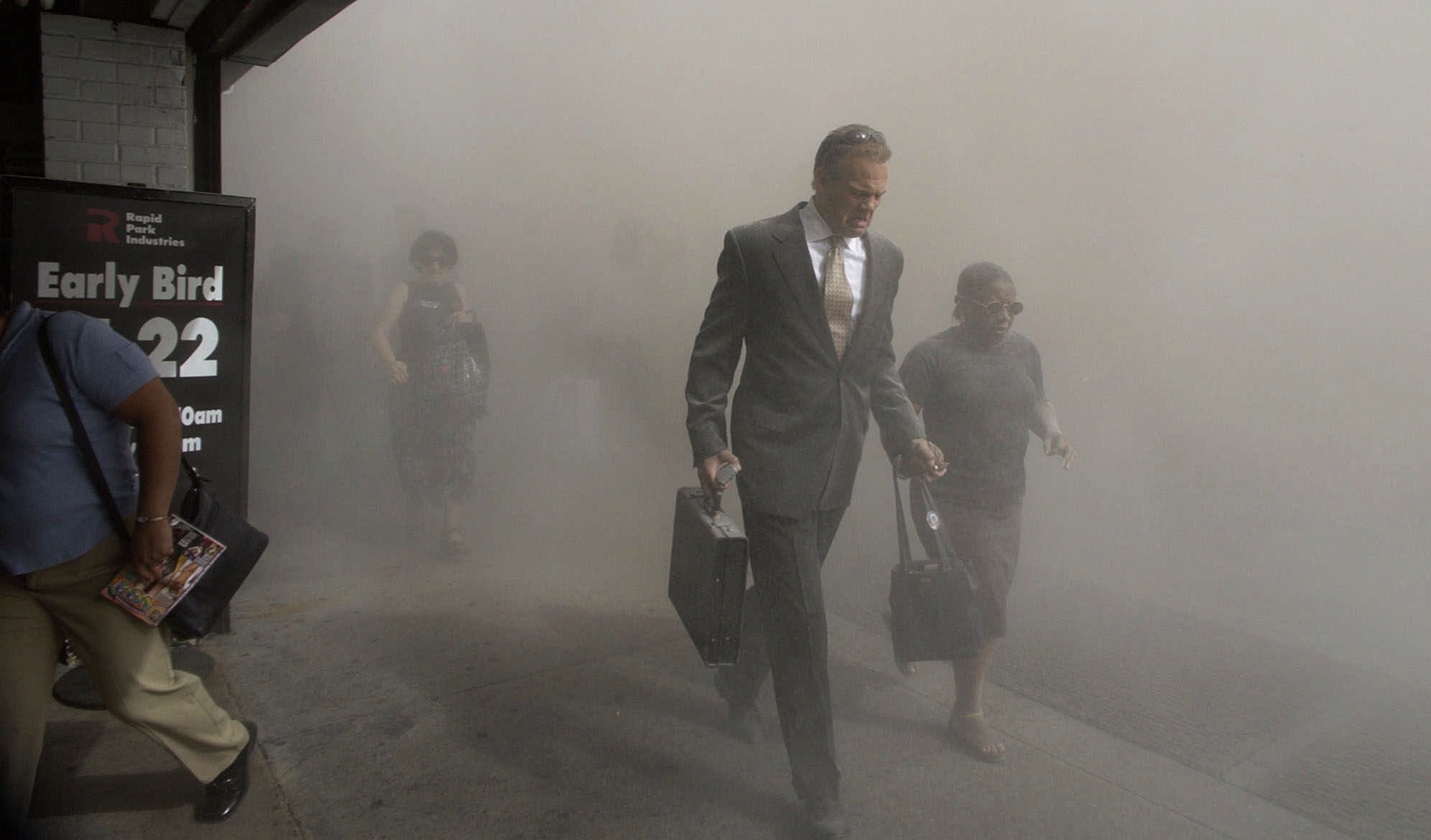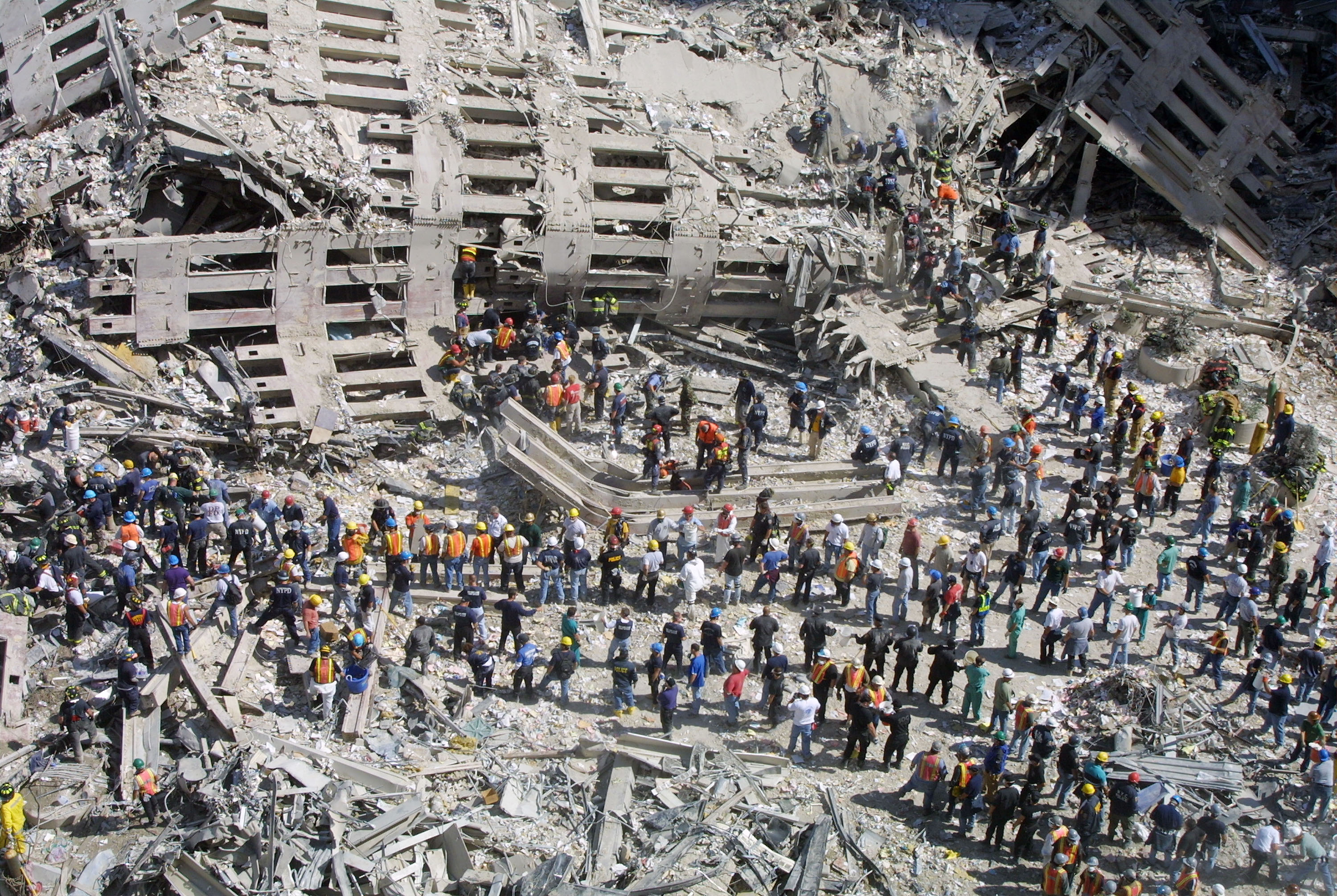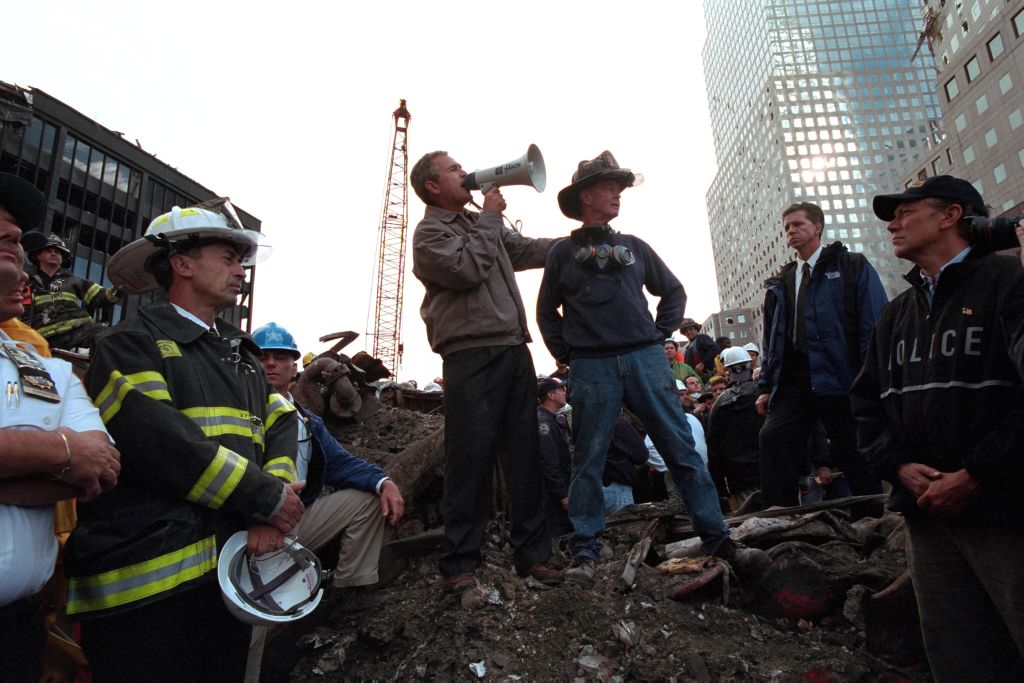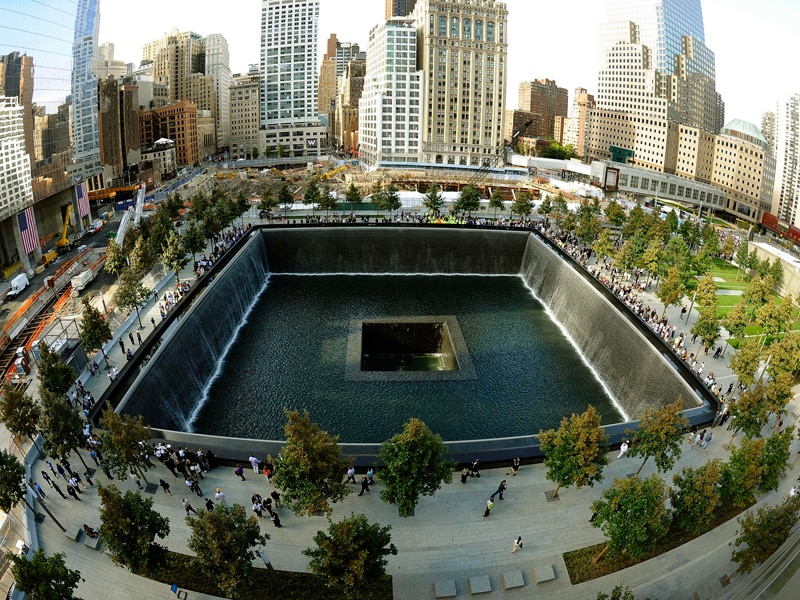ldquoThere are things burned into my memoryrdquo Australian James Dorney on surviving 911
“There are things I can’t forget that are burned into my memory, things I will never be able to forget like the north tower exploding right in front of me as I stood on the 92nd floor,†James Dorney told Insight.
“I can still remember the explosion, the fire, the smoke and all the colourful paper floating on the breeze.â€
It was the 11th of September, 2001, and James Dorney, a then 25-year-old Australian, was sitting in his office in the southern tower of the World Trade Centre.
Twenty years on and Dorney told Insight many memories of that day have faded, only for others to remain as vivid as if it were yesterday.
One of those intense memories is the stairwell Dorney found himself in as he tried desperately to reach the ground floor. He was in that stairwell, around the 60th floor, when the second plane hit his building.

Office workers flee the area of the World Trade Center in lower Manhattan following the terrorist attack on Sept. 11, 2001.
AP Photo/Amy Sancetta
“I will never forget the horror of those never ending stairs, and the force of the impact when the plane hit our building,†he said.
“I don’t think I will ever forget the feeling of thinking the entire building was about to fall down and having no idea what was happening.
“The memories of finally making it to ground level and seeing the firefighters going the other way up into the building, of getting onto Broadway and looking back at the two burning buildings and still having no idea what had happened or was going on.â€
Dorney said he was in survival mode, trying to put as much distance between himself and the buildings as he could.

Rescue workers sift through the wreckage of the World Trade Center.
Getty Images North America
Eventually he, and the rest of the world, realised the full extent of the terror attack. Members of the terrorist organisation Al Qaeda, which was granted sanctuary in Afghanistan by the Taliban, flew two hijacked airliners into the World Trade Center buildings in New York and the Pentagon in Virginia. A fourth plane crashed in Pennsylvania. In total, 2,977 civilians lost their lives, most of them in New York.
Soon after, on September the 18th, 2001, then president George W. Bush signed into law a joint resolution authorising the use of force against those responsible for attacking the United States. It was the 7th of October, 2001, when US forces began bombing the Taliban and Al Qaeda in Afghanistan.
Dorney doesn’t recall feeling “any way in particular†about George W. Bush’s announcement. He was busy paying his respects to his colleagues and friends who didn’t make it out of the building.
“To put it in perspective, on a weekend following September 11 there was a day I had three funerals in one day - a close colleague (on my floor), the father of a close friend and one of my best American mates (both worked below me in the south tower),†he said.

Standing with a retired NY City firefighter, then President George W Bush rallied firefighters and rescue workers at the collapsed World Trade Center in 2001.
Photo via Smith Collection/Gado/Getty Images
By mid October Dorney was back in Australia - a decision he made at the request of his family.
“I wasn’t going to come back but my family insisted â€" or else they threatened to come and see me in New York instead,†he explained.
“That would not have been a good idea at the time, New York was not a great place to be ... I vividly remember the fighter jets roaring overhead every day.
“I landed in Sydney, got straight in a car, headed North and went fishing on Fraser Island for a while with my dad and brothers.
“I had intended to return [to New York] after a small break in Australia but I never did.â€
Very early on I realised I could not let this define me, I had to accept what had happened.
Now, 20 years on from the September 11 attacks, the Taliban has regained power in Afghanistan. The US has ended its 20 year war in the country, resulting in the death of more than 46,000 civilians from all sides. Dorney said the situation is complex, and he’s trying to make sense of it the same way many of us are.
“Like a lot of people, it is upsetting and distressing to see the scenes on TV, and I share a level of dismay that it appears to be back where it all started, almost right on the date of the 20 year anniversary, who would have thought?â€
“I guess it further adds to the level of interest and commentary about the original event.
“I remain hopeful that the lessons of the past are learnt, and a more moderate approach is taken by the new government in Afghanistan.â€

The World Trade Center memorial in New York City.
As for everything Dorney has experienced, he said he’s never let it rule his life.
“Very early on I realised I could not let this define me, I had to accept what had happened,†he said.
“If I sat around and felt sorry for myself and miserable the world would leave you behind.
“I have always put more focus into what’s ahead of me, being positive and not looking back over my shoulder the whole time, it’s really the only way you could manage something like this - afterall I still had an opportunity to get on with life, so many people I knew that day didn’t, and I really felt I owed it to them also.â€
James appeared on Insight's 2014 episode, Survival. You can watch part 1 here. And part 2 here.

0 Response to "ldquoThere are things burned into my memoryrdquo Australian James Dorney on surviving 911"
Post a Comment